Using your home oven properly for baking macarons can help to avoid hollow, lopsided, browned or cracked shells. This post will go over different ways to set your home oven for baking colorful macarons.
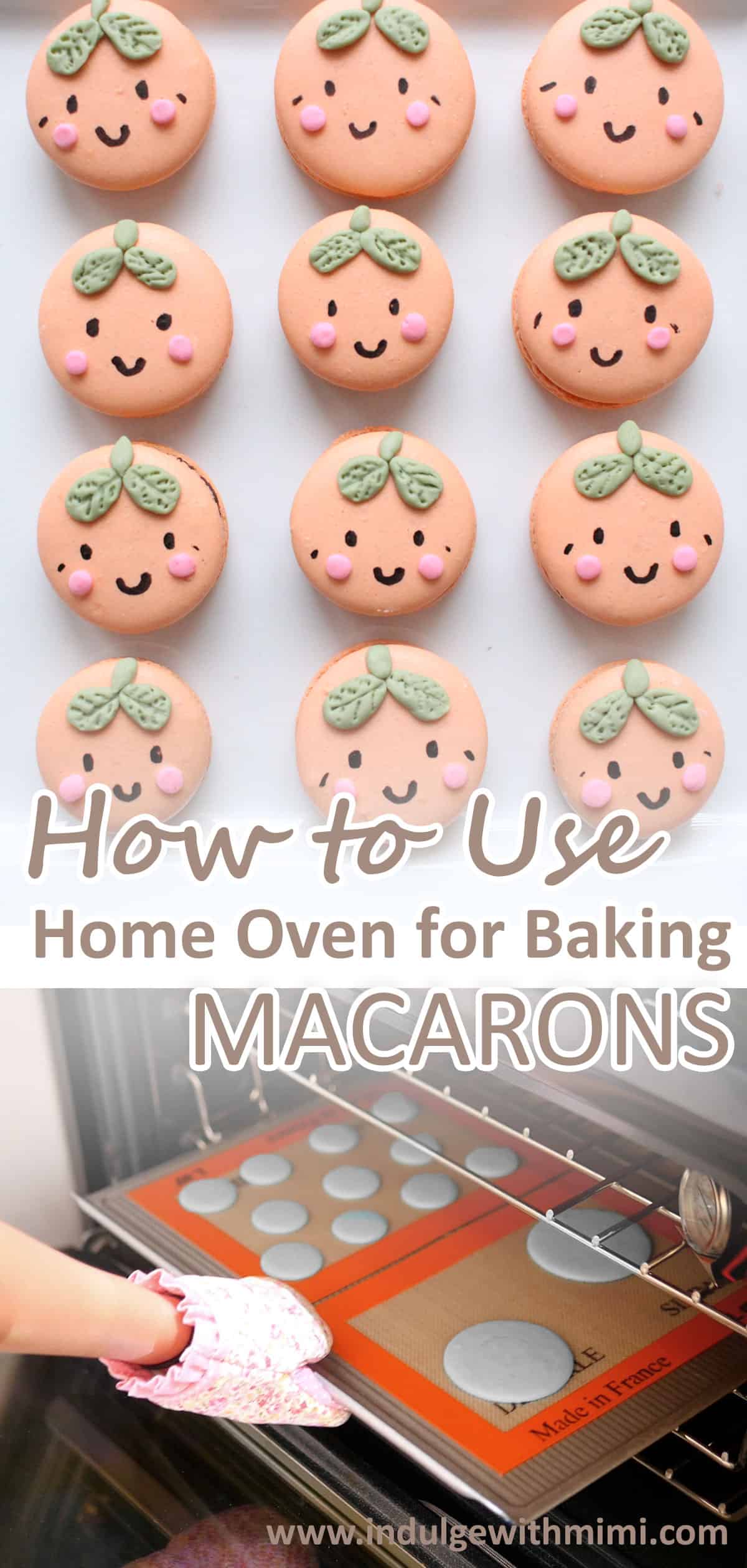
Jump to:
I wrote this post on correctly using your home oven for baking macarons because I found that there wasn't much information about how to use your home oven properly when baking macarons. Unlike spacious and sturdy commercial grade ovens with even heat distribution, home ovens can be temperamental and seem to need a lot of coddling.
For any home baker, it's very important to know their own oven well in order to achieve success with any recipe, even my Best Macaron Recipe will only get you so far in achieving perfect macarons if you don't know how to adjust your oven properly for baking macarons. You will need to experiment under different baking conditions like rack position, temperature and bake time to find the optimal conditions for successful baking. When you learn to trust your oven, it will love you back ♥
When I started making macarons, I was more concerned about feet development and just making sure that the macarons actually looked like macarons. Needless to say, I was not too picky back then. But as I baked more of them, I realized that all the faults like hollow shells, crispy over baked bodies etc. would actually manifest itself in its outer appearance. In other words, you are essentially showing the world all your macaron's faults just by its visual presentation. I started to demand more perfection from these little sweet treats.
Even when you follow a macaron recipe religiously, you can still end up with ugly or underdeveloped macarons simply because you used your oven incorrectly (READ: Macaron Troubleshooting Guide). Almost all the recipes I've come across only instructs to bake at a certain time and temperature on the middle rack. It drove me crazy when I ended up with overly brown or under cooked macarons. It led me to experiment with my oven in order to get my macarons just right.
Average Baking Time & Temperature for Macarons
I'm not claiming to have the exact solution for you because all ovens are different. Every baker should know their own oven well. This post highlights the different ways to adjust your own oven to perfect the baking process. You may need to use a combination of these adjustments to achieve the results you want depending on your own situation.
All of the scenarios below are in reference to the average baking time, temperature and rack position of the two methods below:
♥ FRENCH Method: 320 F for 12-14 minutes on the middle rack ♥
♥ ITALIAN Method: 260 F for 20-22 minutes on the middle rack ♥
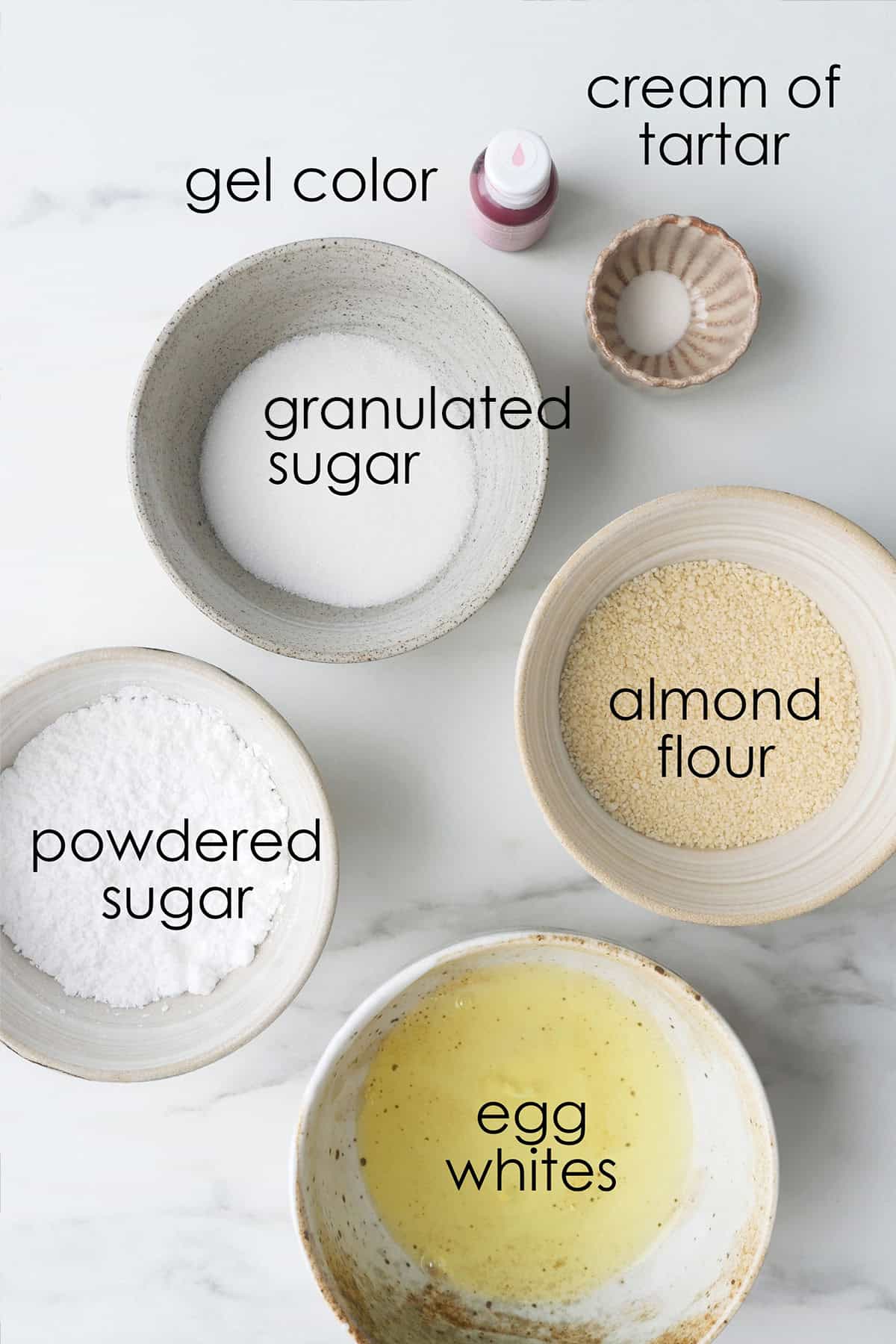

Oven Adjustment Methods
Baking Time and Temperature
Macarons can be over baked/under baked and feet development can be overdeveloped/underdeveloped if the baking time or temperature is not well aligned. For over baked shells or over developed feet, the temperature is probably too high causing it to bake too quickly. You will also find that feet which develop quickly and outwards are also victims of over folding and overly hot oven temperatures. The high heat forces the feet to develop much too quickly and it has nowhere to go except up and out. On the other hand, under baked shells and under developed feet (not a lack of feet due to wrong folding techniques, just underdeveloped), cannot fully reach their full potential when the oven temperature is not high enough.
Learn to adjust the temperatures in your oven. To compensate for adjusted temperatures, you will also need to readjust the baking time and vice versa. For temperature increases, baking time should be decreased. For temperature decreases, baking time should be increased. However, baking at lower temperatures may sometimes result in an undercooked shell and baking at higher temperatures may cause shells to brown. If that is the case, try adjusting the rack position as outlined in the next section.
Baking Time and Temperature Relationship
Macaron Baking Time and Temperature Relationship
↑ Increase temperature - ↓ decrease time
↓ Decrease temperature - ↑ increase time
As a starting point, for every 25 F increase or decrease, compensate with a 2-3 minutes change in baking time in the inverse direction.
Some Recommended Baking Temperature and Times
350 F for 10 minutes - suitable for spacious large ovens
325 F for 12-14 minutes - standard starting point for my recipe
300 F for 16-18 minutes
275 F for 18-20 minutes - suitable for smaller ovens with small compartments
These temperatures are for conventional ovens without convection setting. Usually, it is recommended to decrease the temperature by 25 F when using the convection setting.
Rack Position
The middle rack is often the "default" position in any oven. It's ideal for most foods since it allows the hot air to circulate evenly around the food, resulting in balanced heat distribution. Most recipes recommend that you bake your macarons on the middle shelf. However, you may need to adjust this depending on where your heat source is coming from and your own individual problems.
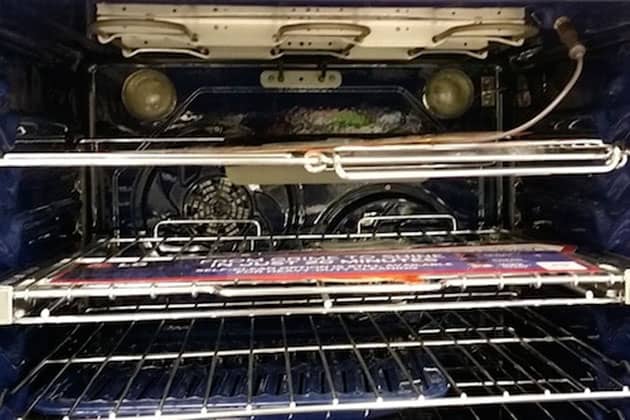
Browning of shell top due to broiler's heat source from the TOP of the oven without convection fan: If the tops of your macarons are browning too fast before the centre is fully cooked, try moving your macarons to a lower rack until the feets develop. Then, place an empty tray on the rack above the shells to shield them from the heat.
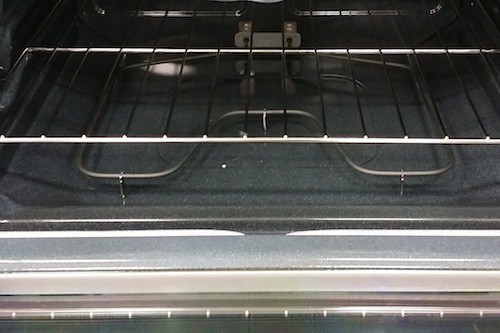
Shells browning on bottom due to heat source from the exposed bake element at the BOTTOM of the oven without convection fan: If your macarons are browning on the bottom before the centre is fully cooked, try moving the macarons to a higher rack. If that alone doesn't help, you can try adding an extra tray immediately below the current tray to prevent it from heating up too quickly.
Convection vs. True Convection
A regular convection oven features a fan which helps to distributes the air around the oven. A "true convection" (a.k.a European convection or third-element convection) utilizes an additional heating element behind the fan to blow heated air to your dish. This method produces more even heat distribution and better baking results.
Using the convection fan
I have become a recent convert to the convection fan since I have found that the temperature remains consistent throughout the baking process with only a 5 degree variance. The fan helps to distribute heat more evenly throughout the oven cavity so you may even be able to bake several trays at once. The heat reaching your macarons may be increased and you may need to decrease the temperature or baking time. As a starting point, it is usually recommended to decrease the temperature by 25 F when using the convection setting.
On the flip side, some bakers may find that their convection fan is a little too strong and causes the macaron shells to become lopsided. You can consider turning on convection cooking during the latter part of the baking period since your shells will already be stronger at that point than when they were wet. If that doesn't help, you may need to skip using the fan altogether.
Having said all that, a convection fan is not necessary when using your home oven for baking macarons. It is a nice added bonus to keep the heat distributing evenly and consistently. You can still achieve this by using other baking tweaks and the proper heat conducting kitchen tools which will be outlined below.
Hot-Preheat Method
If you're still having trouble using a slow and consistent temperature method, try the hot-preheat method. Increase the oven temperature 50 degrees more than the usual baking temperature during the preheat. Once it has reached that temperature and you're ready to bake, turn it down to the regular baking temperature once you place your trays inside. You will need to compensate for this increase in temperature by baking it a shorter amount of time.
This method allows your shells to develop feet from the exposure to the initial high heat but lets them finish off at a lower temperature to avoid browning and over baking. You'll need to be careful of this though as home ovens can cycle hot and cold before it ever reaches your desired temperature so adjusting the temperature mid-way in the baking process may not really change the temperature as you'd hope it would. Read this post on finding a consistent oven temperature.
Reduce Oven Moisture
In Pierre Herme's Macarons book, he advises to open the oven door near the end of the baking time after the feet have developed to let out the steam. Personally, I have never had to do this. I rarely open the oven or turn my trays because I prefer to keep the oven door closed so the heat remains consistent but if this is an area of concern for you, you can also keep the oven door ajar for the whole or for a duration of the baking time by propping a wooden spoon in between the door. You will need to compensate for the loss in heat by increasing the oven temperature.

Good Oven Practices for Baking Macarons
Always Pre-Heat Oven and Use an Oven Thermometer
Always Pre-heat your oven to the correct temperature before placing your trays inside. Place an external oven thermometer inside the oven to ensure that the temperature is correct. Many bakers assume that their ovens are at the correct temperature when in fact, it has increased or decreased during the baking process without their knowledge.
You don't need a fancy thermometer, just a simple hanging one like this one will do. I like that it is small and saves space because it can be hooked on the upper tray. Did you know that the temperature during the initial period of pre-heating is the most unstable? Read my other post on Maintaining a Consistent Oven Temperature.
Identify Hot Spots in Your Oven:
If you are getting uneven results from the same tray of macarons - some are browner than others or some are under baked - you may be facing an issue of hot spots in your oven. You'll need to avoid placing macarons in those areas and rotate your tray throughout the baking time to achieve more even heat distribution.
A great way to identify the hot spots in your oven is to bake several slices of white bread on a tray until it turns brown. You can then see if they have all browned at the same pace or if some are browner than the others.
Bake One Batch at a Time:
I do not recommend baking several trays at once until you have already found the optimal conditions in your oven to bake a perfect batch. Until then, it would be difficult for you to determine why your macarons did not bake successfully. When you bake several batches at once in a small home oven, sometimes heat cannot be evenly distributed to all the shells at the same time. Also, if you are baking on different racks, you would be forcing your macarons to be closer to or further away from a heat source than you'd like. Although not advised for new macaron bakers, if baking several batches at once, try to: alternate the trays midway into the baking time or bake 2 trays on the same rack instead of on different racks. If you have a true convection oven, baking several trays may be easier with the convection setting.
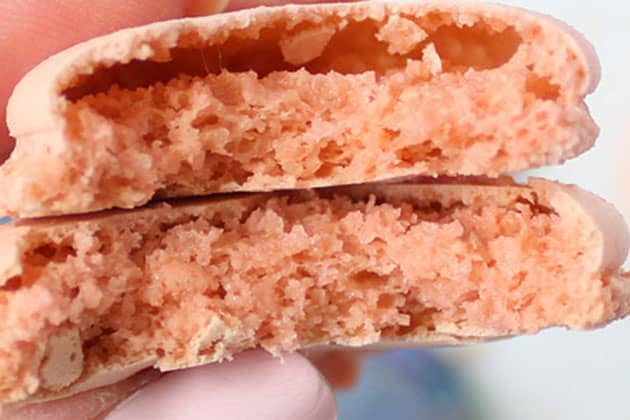
Avoid Hollows
Hollow macaron shells are a result of a combination of poor batter preparation and not enough heat distribution during baking. To combat the latter, use good heat conducting equipment and increase the temperature or baking time.
Check that your baking pan is conducting enough heat to your macaron shells to help it rise. I like using these rimless aluminized steel ones because it conducts heat evenly and allows for good airflow. It is also very sturdy and doesn't buckle easily, preventing lopsided macarons.
A way to encourage heat transfer from the pan to the macarons is to use parchment paper or Teflon sheets instead of silicone mats. I like silicone mats because they keep the macaron shapes from spreading. I only use Silpat branded ones because they are guaranteed to be made from food-grade materials and they conduct heat well.
Lastly, to maintain a consistent temperature inside the oven, try keeping a pizza stone inside the oven on a lower rack from the macarons. I wrote a whole guide on How to Prevent Hollow Macarons if you're interested in reading more about this.
Summary of Macaron Troubleshoots Due to Oven Conditions
(Complete macaron troubleshooting here):
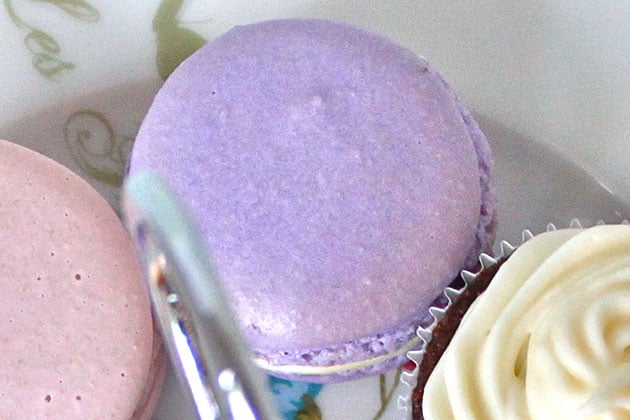
• Shell top is browning:
- move further away from heat source
- decrease temperature, increase time
- shield macarons with empty tray on rack above
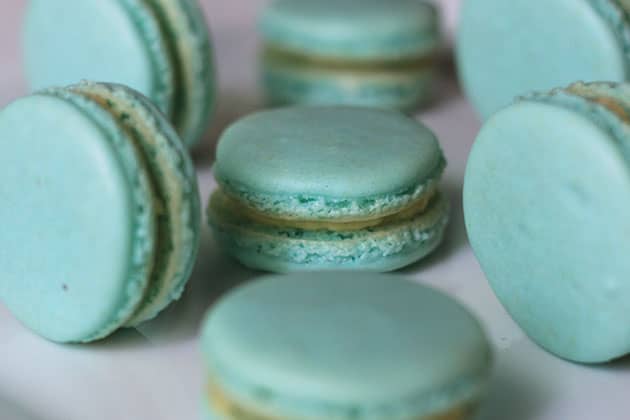
• Shell bottom is browning:
- move further away from heat source
- decrease temperature, increase time
- add double pan on bottom
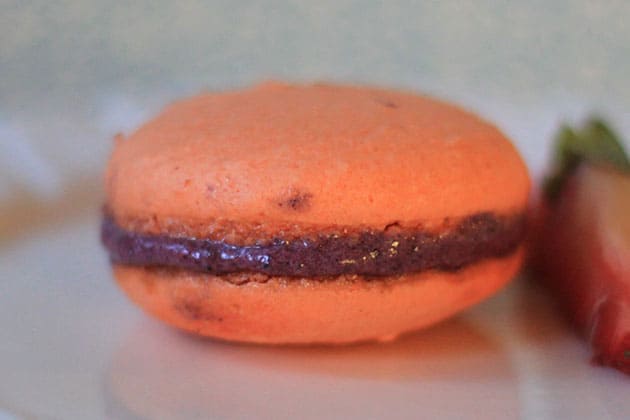
• Shell is undercooked or feet is under-developed:
- move closer to heat source
- increase baking time
- increase temperature
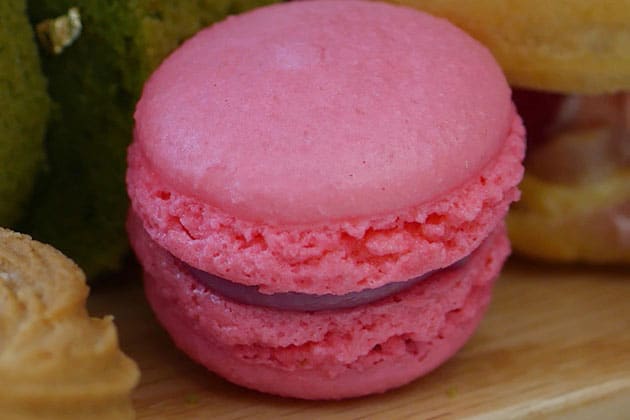
• Shell is overcooked/dry or feet is over-developed:
- let macaron mature 24 hours or more after filling
- brush same flavoured syrup or milk on bottom of shells
- next time, turn down heat or move away from heat source
- stop whipping egg whites once it reaches stiff peaks
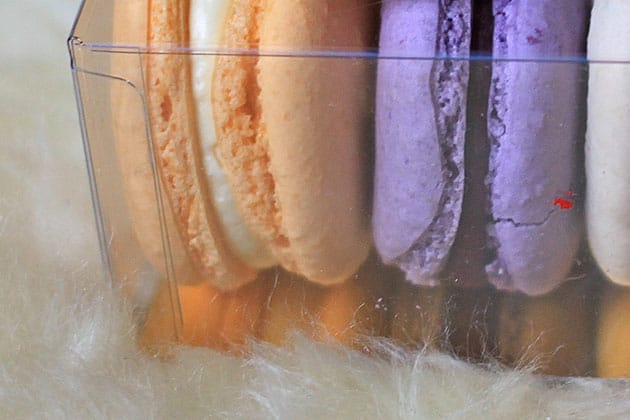
• Shell is lopsided:
- avoid using convection fan if thats the culprit
- avoid using fans the blow directly onto macarons while waiting for skin to develop
-use the range hood fan instead to dry out piped macarons
- consider using a silpat mat instead of parchment paper
- incorrect piping techniques
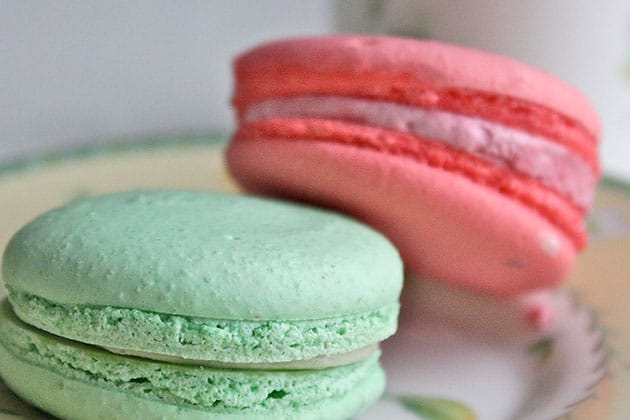
• Inconsistency in the same batch:
- identify hot spots in your oven
- bake only one tray at a time until you find the optimal baking time/temperature
- for trays baked on different racks, alternate the trays midway into the baking time
- ensure batter is fully incorporated before piping
I hope this post on how to correctly use your home oven for baking macarons. Let me know how yours went.
Happy Baking to You!
XOXO, Mimi
Note: This post was originally published on October 1st, 2014.

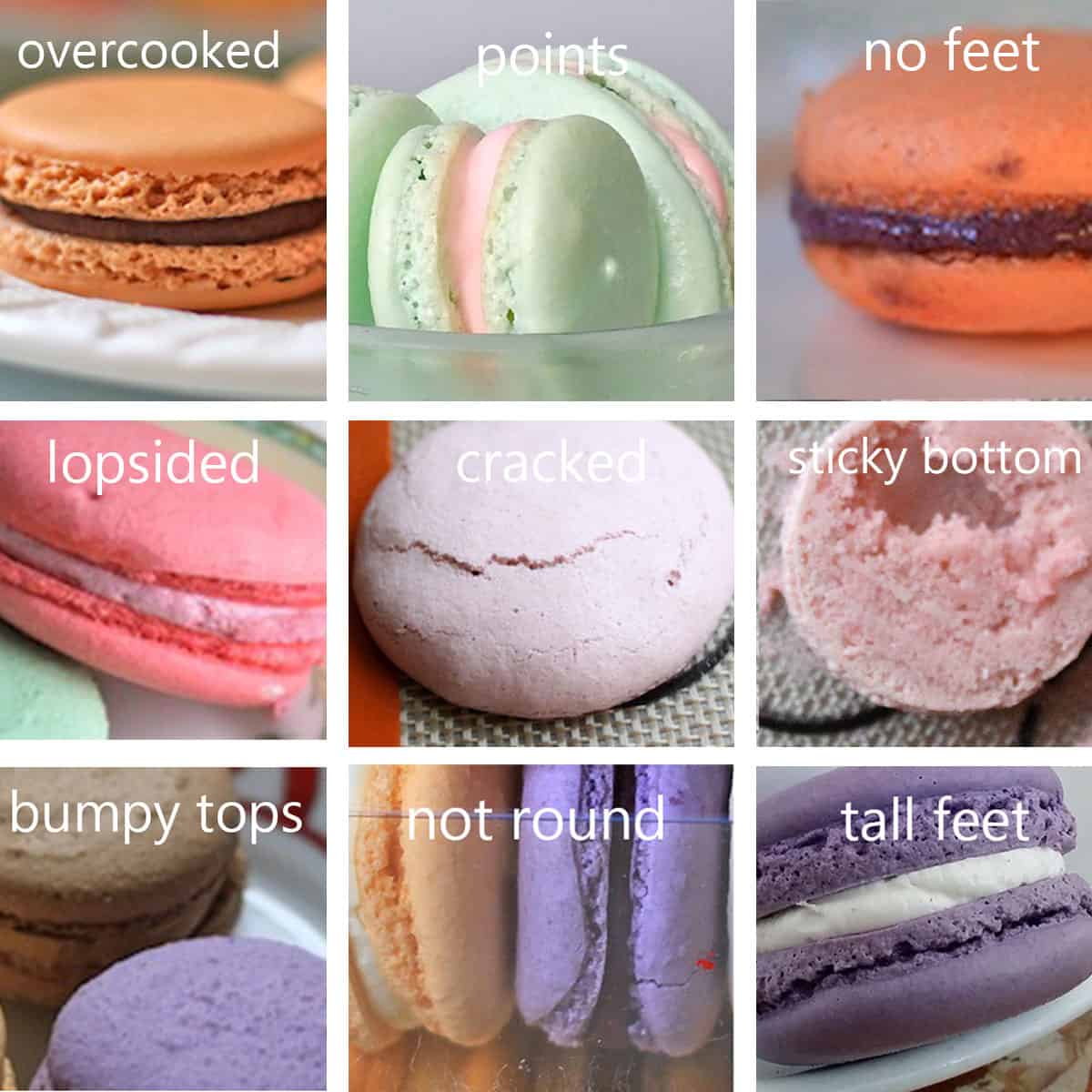


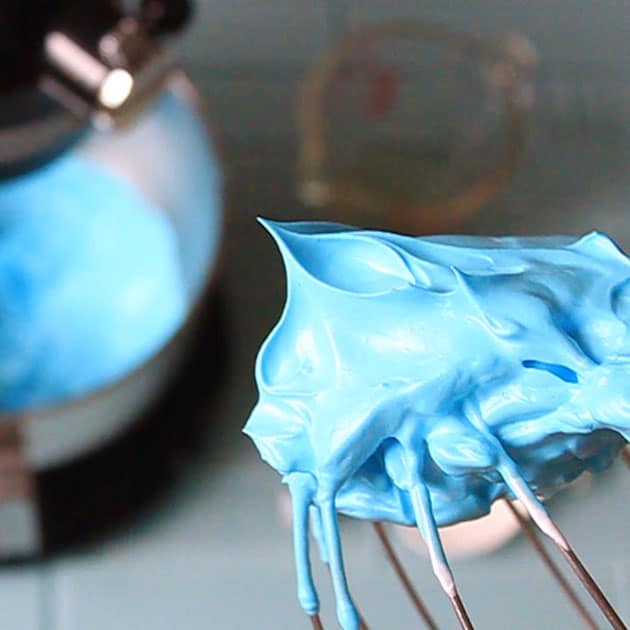
Rajeswari says
Hi ..I started baking my macarons just a month now..with lot of trial and errors thought they were perfect .to understand it better got macaron from famous shop .My macaron are getting the right texture ..like no cracks ..feet seem perfect ..only thing is they r a little gooey when I bite it as compared to the store bought.where am i going wrong.i read somewhere in a recipe to add cornflour.does that change the texture.pls help
Mimi says
Hi Rajeswari,
You don't need any cornflour, they will develop just fine without 🙂 Have you checked that your filling isn't too high-moisture? Have you also checked if they are indeed fully baked before bringing them out of the oven?
XOXO,
Mimi
M P says
Thoughts on high altitude changes? I've heard that some add some extra egg white protein to keep them from collapsing as easily in the high altitude (~6,000 ft). We try here and there, and they usually seem to rise to about the right size, but then fall in. Keep trying to fix it as if "hollow", but wondering about maybe needing more structure at altitude
Mimi says
Hi M P,
I hear this question quite a bit. I don't have experience baking in high altitudes but have heard my recipe works no problems in those environments. Since I can't give any feedback on my own experiences, I hope you can find the answer with a google search or two and let me know if you come across anything that has helped you. I can pass it on to others. Good luck!
XOXO,
Mimi
Maisey says
Hi Mimi,
I’ve tried making macarons like 15 times now. They all came out hollow, when I use the silicone mats, but when I used parchment paper, the hollow was no more! But, I still got underdeveloped feet and my shells look like little mushrooms. How can I make successful macarons on the silicone mat without having to rely always on parchment paper, and how can I make my shells to not look like mushrooms .
Thank you!
Mimi says
Hi Maisey,
This is actually quite a common problem because the heat is not conducting as well on the mats and this can be further exacerbated by a batter that is a not as ideal. Here is a post on how to prevent hollow macarons.
XOXO,
Mimi
Neo says
Hii, is it using a top n bottom heat or just using bottom heat to bake the macaroons?
Mimi says
My oven uses the convection fan, and the heating coils are located on the top. XOXO, Mimi
Hanan says
Can you please share with me the recipe with one egg white?
Mimi says
Hi Hanan,
I don't recommend using one egg whites as it becomes very difficult to whip up in a stand mixer. Folding also becomes difficult as it's hard to gauge how flowy it is. If you really want to try it, a very rough estimate of the ingredients needed would be to divide the recipe in half for every ingredient.
XOXO,
Mimi
Charlise says
I've spent 2 weeks trying to perfect my macaroon and it still nowhere near the ideal texture. I am using a deck oven and i tried baking at 320 F for 12 mins but it immediately browned both the top and bottom. Moreover, every single batch of macaroon turns out really hard and biscotti like. Does the amount of resting time affect the hardness of the macaroon or is it just the baking time. This is because I tried resting it less time and also experimented with multiple baking time and temperature but it still always turns out super crunch and with a few hollow spots. I was hoping to ask you i f i should just bake the macaroon once no batter sticks to my finger, or should i wait a bit more for it to get firm and not indent too easily when i touch it. I really hope you could help me solve this problem Many thanks and have a great day ahead!
Mimi says
Hi Charlise,
The hardness of the shells is more dependent on maturation and baking time/temp instead of resting time. Ideal batters don't even need resting while weaker ones will benefit from more resting to create a bit of an insurance. If you find that your batter folds very easily and gets very flowy very quickly, it's too wet, and these type of batters will benefit from more resting to the point of no indentation once touched.
XOXO,
Mimi
Meryem Koc says
Hi, Mimi
I was baking macarons at 285f with my older oven and they were perfect. But now I have changed my oven and never comes ok. My macarons bottom are always sticky. I tried up to 350f for 15min and still the same. If I cook a few minutes exstra they get dry. Just one time I tried to bake with fan and top pf the shell got browny and bottom still sticky. Where I am doing wrong, please help me?
Mimi says
Have you tried better heat conducting pans or teflon paper? Those will help heat reach the bottom of the macaron shells without having to amp up the oven temp. You can find these items in my SHOP link. I hope it all works out. New ovens can be a real learning curve for sure.
XOXO, Mimi
Dianne says
Been working on gazillion batches but the results are always temperemental. . If not hollow, either lopsided or browned shell. Cracked shells, name all i gues ive encountered a lot of problems every time. The feet expanded etc. I started my desire to bake macarons since May. I got hooked and ended up frustrated at times. Its really so distressing to get it right. I just couldnt figure out the culprit. If its my oven. Or my macronage. The ratio. Etc. I must admit ive tried other recipe/ratio too but most of them are not working for me. Sometimes i get good shells and most of the times arent desirable at all. I felt i really need big help to identify whats making my macarons a failure huhuhu. Im not giving up though . 🙁
Mimi says
Hi Dianne,
I really like your attitude. Definitely keep going at it, it will get better with more practice. I had quite a few bad batches in the beginning, and even now sometimes too! 🙂 Try to stick with one recipe so you can get a good feel of it, there really is no magical recipe out there, the techniques are the most important part. I hope to hear how it all went 🙂
XOXO, Mimi
Teresa Gebbett says
Hi mimi
Thanks for all your articles which I have enjoyed reading however I have a problem with wrinkles. At 325f my macarons wrinkle (lovely feet and no hollows) at 350f they brown way too fast (still good feet and no hollows) but no wrinkles. I tried 340f a few wrinkles but not consistent. Would you suggest starting out hotter for a few minutes then reducing temp? I'm cooking them on middle rack with a pan underneath as my gas oven has bottom heat source. Or maybe moving them to higher in oven?
Thanks in advance.
Mimi says
Hi Teresa,
Thank you very much for your feedback. Your temps sound pretty good to me. The higher heat helps to compensate for the weakness in the batter. It might be over beaten meringues, over-mixed batter, incorrect ingredient ratios or use of “oily”/old/wet ingredients. You can see how to fix this in my Macaron Troubleshooting Guide 🙂 I hope it works out.
XOXO,
Mimi
Brooks says
Thanks for this article! After I figured out the "science" to macarons a couple of years ago, I wasn't having issues with hollows or browning. However, I was just in a situation where a 3 dozen order was due next day, but with the recent weather shift and ungodly humidity here in Houston, TX, I was having issues with hollows, browning, and texture, and was starting to panic! Your article really helped me to re-consolidate and get back to basics and troubleshoot! Got the pastries to come out perfect and the order made it on time. 🙂
Mimi says
That's perfect. I'm so happy to hear that. I can feel that stress you described as somehow macarons always seem to misbehave when we need them to the most:) Thanks for coming back to tell me how it all went. Wishing you more success in your mac biz. xoxo, Mimi
Kamilah K says
Hi!
I stumbled upon your site when trying to make macarons and my oven is an electric oven with a convection setting. There are also different heating elements when baking and I'm unsure which I should go for. With the convection fan, middle rack, should I bake it with Bake - heat from the bottom, Broil - heat from the top, or Toast - heat from bottom AND top?
Either way, thank you for this post! It's definitely helped to know what to avoid and what to look for in my macarons the next time I bake!
Mimi says
Perfect. I'm so glad to hear this post helped you! I hope your macarons turns out nicely. XOXO, Mimi
Rose says
What can I do to keep the parchment paper onto the cooking sheets when I beat the trays after piping? The batter goes all over and my macarons are lopsided.
Mimi says
Hi Rose,
Use a bit of the wet macaron batter to keep the paper in place like glue 🙂 This tip works for other baked goods too like bread and cakes. It's so useful when I'm trying to line small loaf pans.
XOXO,
Mimi
Fran @ G'day Souffle' says
Hi, when you say that the oven temperature should be 320 F- do you mean convection oven or 'conventional' oven with no fan? I have been having problems with the tops of my macarons cracking. Maybe I should reduce the heat? (I have a conventional non fan-forced oven). Thanks
Mimi says
This is for regular ovens without convection. Depending on your oven, usually it's recommended to reduce by 25 degrees when using convection setting. XOXO, Mimi
Nancy says
Hi, I don’t know how come some of my macarons turns out good and some crack on top. When I turned oven at 284 for 13 mins bake then macarons undercooked at the feet and some crack, and for 14 mins it turns brown on top and Couples shelf cracks. Can you please tell me why is that and my oven heat is on top and bottom and fan in the middle
Mimi says
Try to rest the shells a bit longer so you have a really firm skin. But it also sounds like the batter could be a bit too runny, that's why you need to rest them for so long.
XOXO,
Mimi
Andria Tran says
Hi Mimi
Stumbled across your site while my son and I are trying to make some macarons. We have an issue of our macarons started out with feet in the oven but later spread flat. It was very chewy. We thought that maybe the oven temp was too high? We did it at 150 Celsius fan forced. What do you think?
Mimi says
It sounds like your oven might be running hot with a poor batter combo. Without seeing your process, it's hard to find the exact reason but I would try to lower the oven temperature just a bit. However, 150 C is not excessively high for macarons. Make sure you have an external oven thermometer to see if your oven is truly running at 150 C. XOXO, Mimi
atheer says
Thank you very much, that was a great topic and coming at the right time for I need it very much.
keep it up
Karina says
Hello Mimi! I discovered your channel recently, I love it!!! I tried to subscribe twice already to your newsletter but haven't got your email 🙁 Hope you can help me out 🙂 Happy baking!
Mimi says
Hi Karina,
I have manually approved of your account. I believe the welcome email should have ended up in your spam folder. If not, please let me know. XOXO, Mimi 🙂